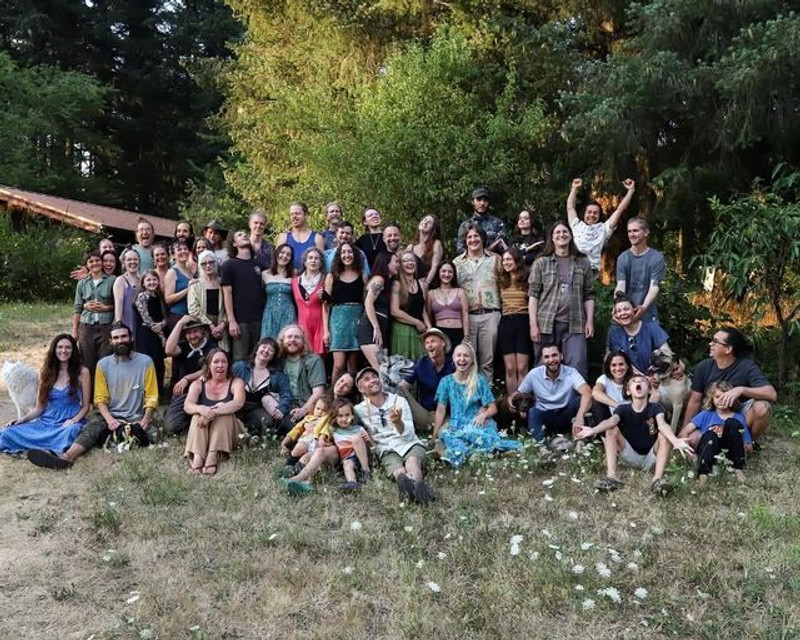While news headlines seem to continually repeat how well the economy is doing, grocery prices, electric bills, and the cost of gas all seem to beg to differ. Inflation plus stagnant wages seem to have us all taking a closer look at where we are spending and trying to make better long-term decisions about where to invest our time and money.
The weight of these higher prices and decisions can feel isolating, but the good news is that we don’t have to go through any of this alone. During times like this, it is important to have a solid community to rely on. What does that look like though?
At Native Foods Nursery, we’re no stranger to community… in fact, our Nursery is nestled within the Meadowsong Ecovillage at Lost Valley Education and Event Center. Here, we work together on shared projects and in community gardens to help lessen the load of work on any one individual while increasing what we can achieve or produce vs if we were working alone. Our thriving gardens are a tool for education in our Permaculture programs, with the added benefit of being able to supplement our individual grocery costs. The Nursery works closely with these programs and our garden team to supply native foods to incorporate into the gardens and help us connect more deeply with the land that holds us.
This literal definition of a community isn’t for everyone, and isn’t even feasible for many folks, but that doesn’t mean that a broader community isn’t achievable. One of my favorite definitions of community is ‘a feeling of fellowship with others, as a result of sharing common attitudes, interests, and goals’. Communities come in all forms and can be made up of your immediate neighborhood, people from your church, extended relatives, or even members of a club or sports team.
One amazing way to build community is through gardening. In many cities, you can find community gardens where you can either have a plot to work for yourself or help tend a larger garden for a share of the produce. This is a great option for folks who live in urban settings where the space to garden is an issue. If you live in suburban or even rural areas, getting to know your neighbors who garden, and establishing a produce-sharing system, can build an extended gardening community. Are your berries producing more than you and your family could ever eat, but you just can’t get tomatoes to fruit? There’s likely someone nearby who would be more than happy to trade their bounty for fresh berries or some homemade jams.
Building communities around shared interests has the added benefit of helping to break down the walls that divide us. When we work together on common projects and goals like building gardens and feeding each other, it helps us to see ourselves reflected in each other. Differences in opinions seem smaller when we are celebrating harvest together and sharing the fruits of our labor.
Using plants to root ourselves deeper into community feels like a small investment that will have multi-level returns in the future. From lasting connections with our neighbors that transcend social divisions to creating localized food security, building community feels like one of the answers we’ve all been looking for. We can all achieve more when we work together.
We would love to hear from you! What does community look like to you? Does your relationship to gardening play a part in how you show up for your community?
Community Building for a more Resilient Future
